No products in the cart.
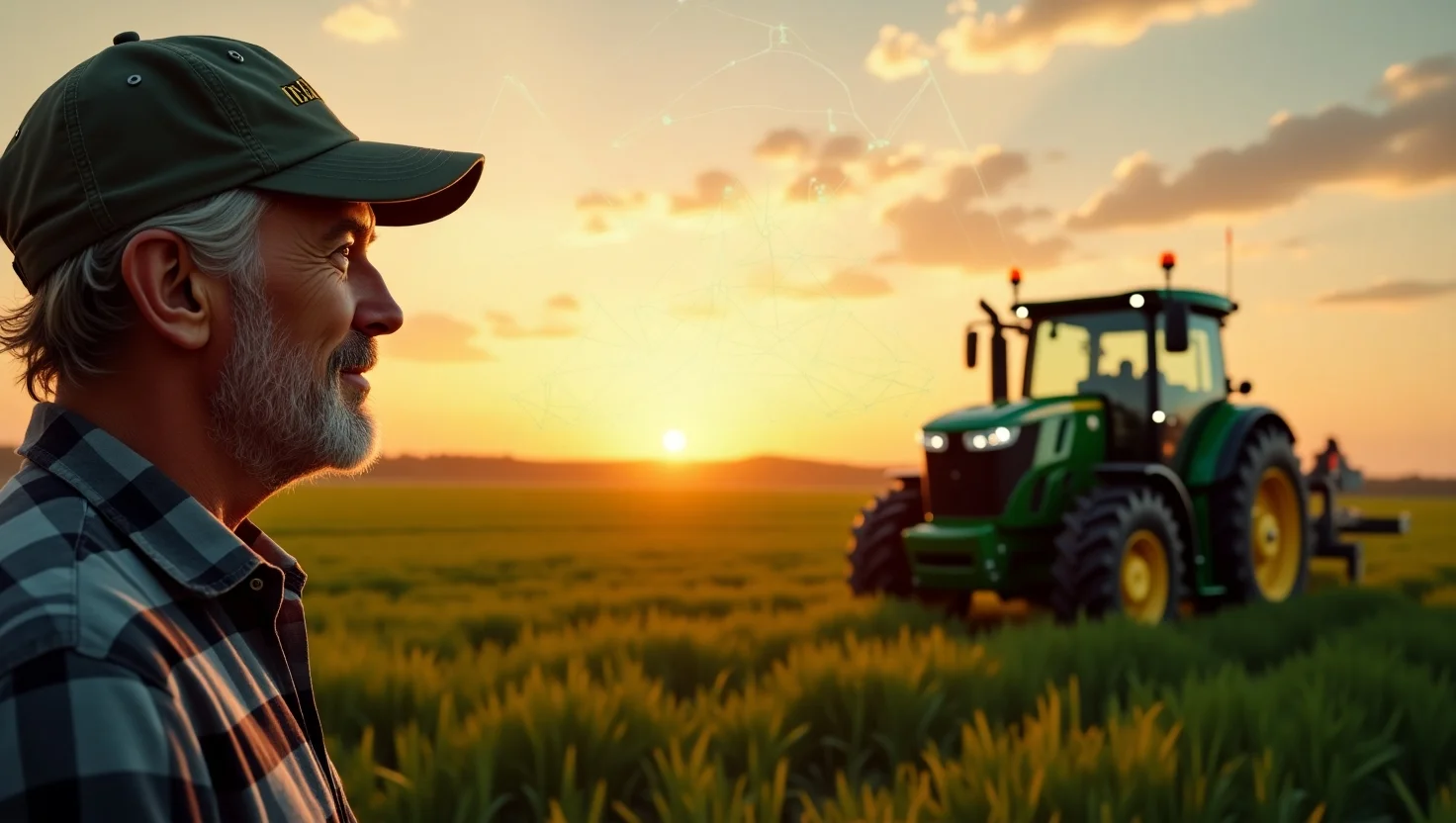
1. Introduction:
In 2025, the American agricultural landscape is undergoing a rapid and unprecedented transformation. Once dependent solely on weather forecasts and intuition, many U.S. farmers are now turning to artificial intelligence (AI) to make smarter, faster, and more profitable decisions. In fact, AI adoption by U.S. farmers has surged as digital farming tools become more accessible, affordable, and vital in a changing climate.
With rising input costs, labor shortages, and increasing pressure to produce more with less, farmers are under immense strain. Traditional methods no longer suffice in an industry that’s expected to feed a growing population under unpredictable environmental conditions. That’s where smart farming technologies come in, offering precision, automation, and real-time insights that help farmers stay ahead.
From AI-powered drones monitoring crop health to automated irrigation systems conserving water, these innovations are revolutionizing how farms operate daily. This isn’t just about high-tech gadgets, it’s a movement toward more sustainable, efficient, and data-driven farming practices. The future of agriculture is being written today, and those who embrace AI early are seeing measurable gains in yield, efficiency, and environmental resilience.
This article explores why AI has become more than a buzzword on the farm, it’s now a practical solution reshaping agriculture in the U.S. We’ll examine what’s driving this shift, the technologies leading the way, and real-world examples of how AI is transforming farming from the ground up.
2. What’s Driving AI Adoption Among U.S. Farmers?
The surge in AI adoption by U.S. farmers in 2025 isn’t a trend, it’s a response to real, mounting challenges in modern agriculture. As farmers face shrinking profit margins, extreme weather conditions, and rising operational costs, they’re looking for sustainable solutions that deliver better results. AI provides exactly that.
One of the biggest drivers behind this shift is farming efficiency. Through precision agriculture, farmers can now apply the exact amount of water, fertilizer, and pesticides needed, minimizing waste and maximizing output. This granular approach not only boosts productivity but also supports climate-smart farming practices that reduce environmental impact.
Labor shortages, particularly in rural regions, are another major concern. With fewer workers available, automation and AI-driven machines are filling the gap. Autonomous tractors, robotic harvesters, and smart irrigation systems reduce manual labor while increasing consistency and speed.
Access to real-time data and predictive analytics is also transforming how farmers plan and respond to daily challenges. AI tools analyze weather patterns, soil health, pest risks, and market trends, enabling smarter, data-backed decisions. This digital transformation in agriculture is helping farmers mitigate risks and stay competitive.
Moreover, support from government grants, agri-tech startups, and increased broadband access in rural areas has made these tools more affordable and scalable for farms of all sizes.
As traditional practices give way to tech-driven strategies, it’s clear that AI isn’t just optional anymore, it’s essential for farmers looking to thrive in 2025 and beyond.
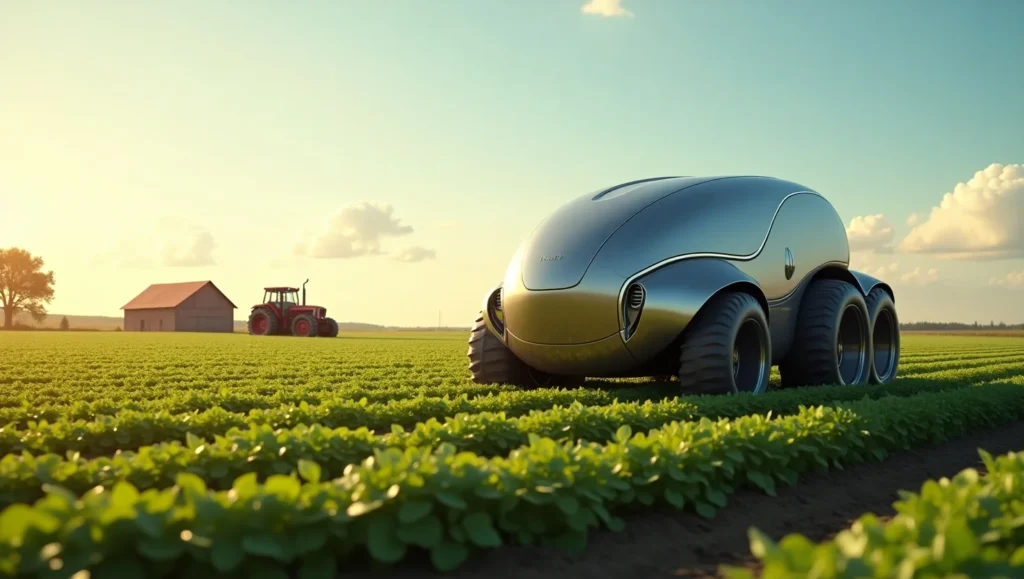
3. Key Technologies U.S. Farmers Are Using
American farmers in 2025 are embracing a wide array of smart farming tools designed to streamline operations and maximize productivity. These technologies aren’t science fiction, they’re already being used in fields across the U.S., offering measurable benefits in yield, efficiency, and cost reduction.
Precision Agriculture Tools
Precision agriculture remains at the core of the AI revolution. Tools like GPS-guided tractors, IoT-enabled soil sensors, and drone-based crop monitoring are helping farmers manage their land with incredible accuracy. These systems reduce resource waste, optimize planting patterns, and ensure healthier crops by tracking plant health in real time.
AI-Powered Drones and Robotics
AI-powered drones are being widely adopted for crop surveillance, identifying pest infestations, and monitoring irrigation needs. These flying assistants can cover hundreds of acres in a fraction of the time it would take manually, offering high-resolution imagery and automated alerts. Additionally, robotic weeders and harvesters are streamlining labor-intensive tasks and increasing productivity on both large and small farms.
Automated Irrigation and Smart Sensors
Automated irrigation systems, guided by soil moisture sensors and weather forecasts, allow farmers to apply just the right amount of water, cutting waste and reducing costs. These systems are especially valuable in drought-prone regions.
Predictive Analytics and AI Dashboards
AI-based software platforms are transforming how farmers make decisions. With predictive analytics in farming, producers can forecast yields, predict pest outbreaks, and manage supply chain logistics more efficiently using historical and real-time data.
These digital tools for agriculture are not just enhancing operations, they’re redefining what’s possible in American farming.
4. Real-Life Examples of Successful AI Adoption
The benefits of AI in agriculture aren’t just theoretical, they’re already being realized on the ground by innovative U.S. farmers. Across the country, farms of all sizes are using AI-driven technologies to boost yields, cut costs, and increase sustainability.
Case Study 1: California Vineyards Using AI for Pest Control
A large vineyard in California integrated AI-powered drone systems to detect early signs of pest infestations. By analyzing aerial imagery and environmental data, these drones pinpoint trouble spots with remarkable precision. As a result, pesticide use was reduced by 30%, lowering costs and environmental impact, an example of successful AI implementation in pest management.
Case Study 2: Midwest Corn Farm Maximizing Irrigation
In Iowa, a mid-sized corn farm implemented automated irrigation systems powered by AI and real-time soil sensors. These systems used weather forecasts and moisture readings to optimize water use. The outcome: a 20% increase in crop yield and a 25% reduction in water consumption, highlighting how AI-driven yield improvement is achievable even without large budgets.
Case Study 3: Small Dairy Farm in Wisconsin Embracing Robotics
A family-owned dairy farm in Wisconsin adopted AI-based milking robots that monitor animal health and milk output. This not only improved animal welfare but also freed up time for farm operators, enhancing operational efficiency, one of many farm automation success stories reshaping the rural workforce.
These U.S. smart farms showcase how agricultural AI solutions are creating real value and setting new standards for productivity.
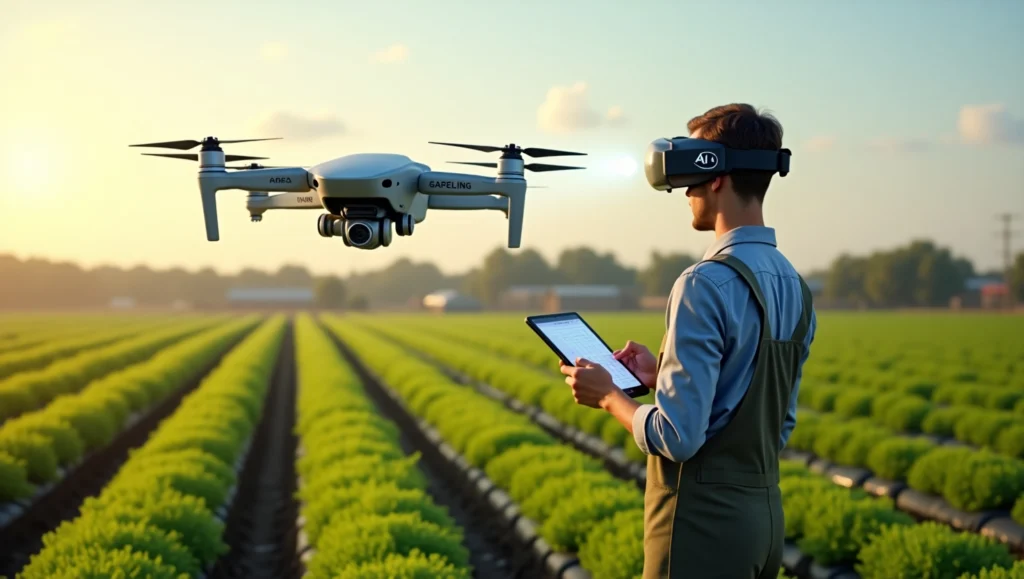
5. The Challenges and Concerns Ahead
While the promise of AI in agriculture is clear, its rapid adoption isn’t without roadblocks. Farmers across the U.S. are optimistic about AI’s potential, but they’re also grappling with significant concerns that could slow or complicate widespread implementation.
High Upfront Costs
One of the primary challenges is the cost of AI tools for farmers. Advanced technologies, like drones, automated machinery, and AI-powered software, can require substantial initial investments. While larger agribusinesses may afford this shift, small and mid-sized farms often find these tools financially out of reach without subsidies or grants.
Limited Rural Connectivity
Reliable internet access remains a major issue in many rural farming regions. AI systems rely on cloud computing and real-time data exchange, which are difficult to manage without strong broadband. These rural connectivity issues limit farmers’ ability to fully benefit from AI platforms.
Data Privacy and Ownership
Farmers are increasingly concerned about data privacy in agriculture. As sensors, drones, and apps collect vast amounts of operational data, questions arise about who owns this information and how it’s used, especially when dealing with large agri-tech companies.
Ethical and Labor Concerns
There are also ethical concerns in farming AI, such as potential job displacement due to automation and the fairness of algorithms used in decision-making. Technology adoption barriers like lack of training or skepticism among older farmers further complicate the transition.
Despite these hurdles, the path forward can be shaped through policy, education, and inclusive technology development.
6. Conclusion and the Road Ahead
As we look toward the future, the role of AI in American farming is poised to expand exponentially. By 2025, more farmers will be leveraging AI adoption benefits to optimize crop yields, improve resource use, and build resilience in the face of climate change. The integration of sustainable farming solutions powered by AI is no longer a distant dream, it’s an ongoing revolution in agriculture.
However, the road ahead remains complex. The challenges identified, such as high costs, rural connectivity issues, and concerns about data privacy, must be addressed through targeted policies and innovations that ensure equal access to AI technology for all farmers, regardless of farm size or location. Collaborative efforts between governments, tech companies, and agricultural stakeholders will be essential in overcoming these obstacles and ensuring that the digital transformation in agriculture remains inclusive and fair.
Despite these challenges, the future of AI in farming is bright. As technology becomes more affordable and accessible, even the smallest farms will benefit from the precision, automation, and efficiency that AI offers. By fostering a more educated and tech-savvy farming community, the U.S. will continue to lead the world in agricultural innovation, setting new standards for productivity and sustainability.
In conclusion, the adoption of AI by American farmers is not just about technology, it’s about a commitment to a more sustainable, profitable, and resilient future for agriculture. The opportunities are vast, and the next few years will be critical in shaping the farm of the future.
FAQs:
Q1. Why are U.S. farmers adopting AI in 2025?
In 2025, American farmers are embracing AI to enhance farming efficiency, reduce costs, and increase sustainability. AI-powered tools help farmers optimize crop yields, monitor soil health, and manage resources more effectively, addressing the challenges of labor shortages, climate change, and rising operational costs.
Q2. What are the key AI technologies used in farming?
Key AI technologies used in farming include AI-powered drones for crop monitoring, automated irrigation systems for water conservation, and precision farming tools like soil sensors and GPS-guided tractors. These technologies enable farmers to make data-driven decisions that improve crop health and productivity.
Q3. How does AI improve farming sustainability?
AI helps farmers adopt sustainable farming solutions by optimizing resource use—such as water, fertilizer, and pesticides. Precision farming reduces waste and minimizes the environmental footprint, contributing to more climate-smart farming practices that are essential for long-term sustainability.
Q4. What are the challenges of adopting AI in agriculture?
While AI offers many benefits, challenges include high upfront costs for AI tools, limited rural internet connectivity, concerns about data privacy, and the potential for job displacement due to automation. Addressing these hurdles requires policies, financial support, and training for farmers to ensure AI technology is accessible to all.
Q5. How can small farms afford AI technology?
Small farms can take advantage of AI through government grants, agricultural subsidies, and partnerships with tech companies. Additionally, as AI tools become more affordable and accessible, small-scale farmers can begin using digital tools like smart irrigation systems and AI-powered crop management software to improve productivity without a large initial investment.
Related Articles
Crop Management
Can AI Predict Market Prices for Farmers? Here’s What You Need to Know
1. Introduction: Agricultural markets are notoriously unpredictable. One season, a bumper crop...
Crop Management
AI-Powered Crop Spraying Drones: Precision Agriculture in Action
1. Introduction: Farming has always been a race against time, pests, and...
Crop Management
Top AI Farming Startups in the U.S. to Watch in 2025
1. Introduction: Farming in the United States is undergoing a seismic shift,...
Crop Management
Top 5 Ways U.S. Farmers Are Using AI Drones to Boost Yields in 2025
1. Introduction: In 2025, the American agricultural landscape is undergoing a transformation...
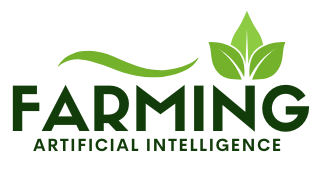

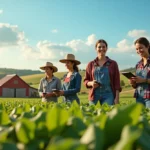
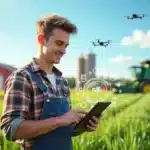

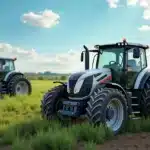

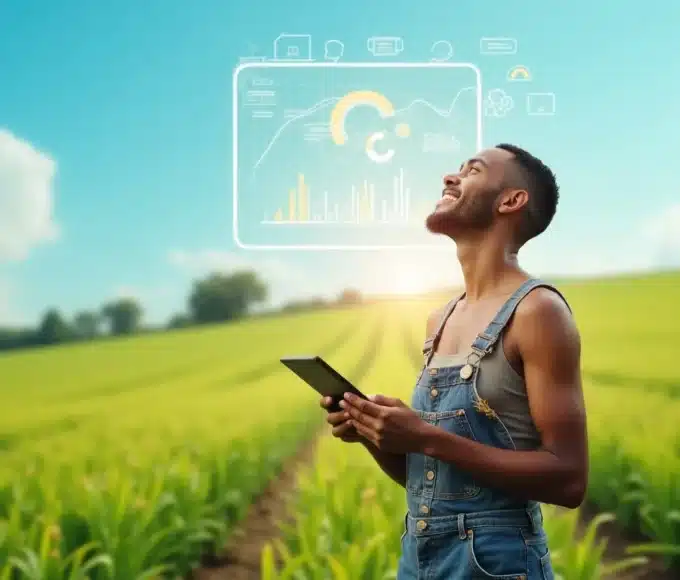
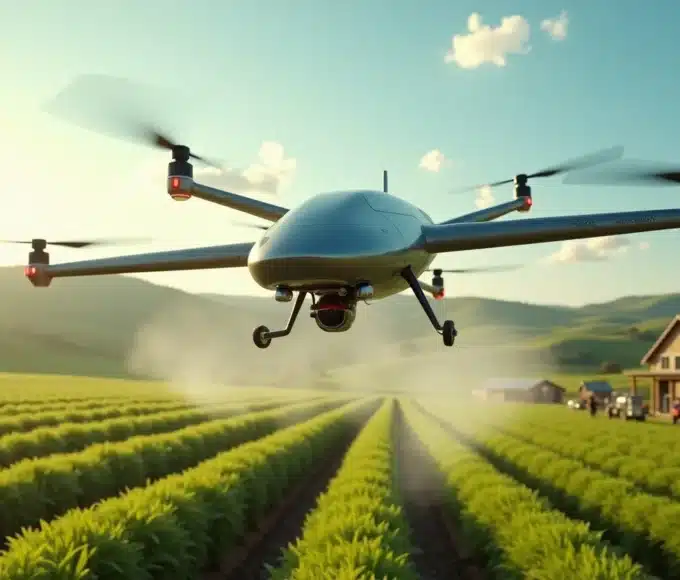
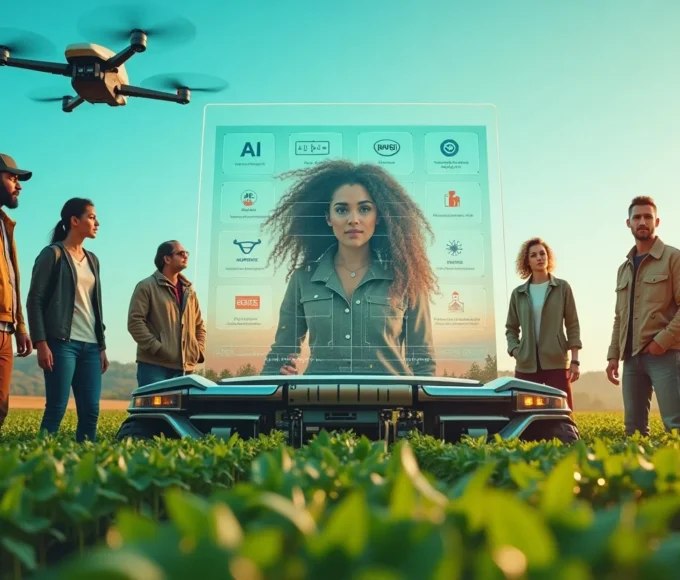

Leave a comment